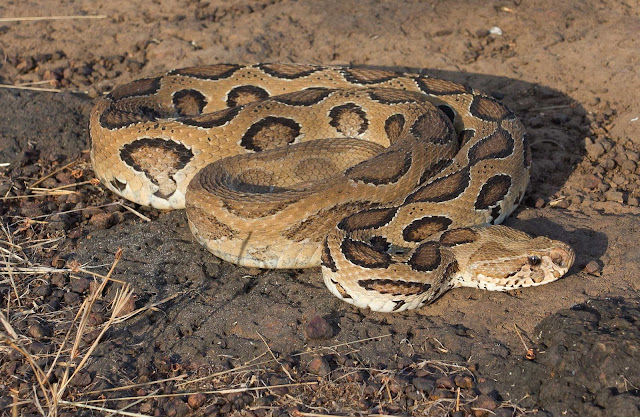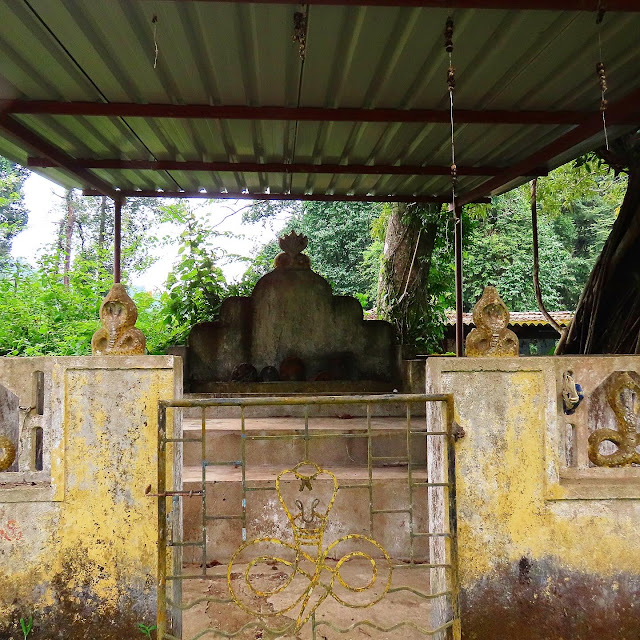Across most parts of rural India, snakes are revered and feared, and the people continue to tolerate their presence and co-inhabit with them, sometimes even worshipping these reptilians. The cultural ethos of these people stops them from launching snake-elimination missions, unlike many other countries like the U.S., where there are rattlesnake roundups. However, sadly, it is these kind-hearted people who also pay the heaviest price when snakes bite, and that is due to the general lack of concern of the government and health sector towards snake-bite-related cases, which is called a "poor man's disease." India, sorrowfully, wears the crown of thorns as the country with the highest number of snake-bite-related deaths globally. Over 50,000 people in the country die due to snake bites each year! Snakes also bear the brunt of such apathy as, with evolving times and changing cultural norms, such deaths reduce people's tolerance towards snakes, forcing them to kill them for self-defense.
Ingrained In Indian Culture
._He_will_awake_for_the_next_cycle_of_creation_which_heralds_the_destruction_of_all_things._Sculpture._From_India,_c._14th_century_CE._National_Museum_of_Scotland.jpg) |
| Lord Vishnu sleeping in the coils of Ananta, the Snake. Image credit: Osama Shukir Muhammed Amin FRCP(Glasg)via Wikimedia Commons. |
Snakes and the people of India have remained intertwined with each other for millennia. Indian mythology and folklore are replete with mentions of snakes. Two of Hinduism's most revered deities, Lord Shiva and Lord Vishnu, are depicted with snakes. Snakes are also given semi-divine status as Nagas of the underground realms with superior powers. Naga Panchami, a festival dedicated to snakes, is also celebrated each year to appease the snake world and seek the blessings of snakes. There are even snake temples and shrines dotting the country. Snakes are considered auspicious, and their ability to shed skin is associated with rebirth. Their innate power to kill with venom also makes them the ideal guardians of sacred places and treasures in Indian mythology. Indian literature and films also portray snakes with human-like traits and glorify them.
This reverence for snakes ingrained in Indian culture is also reflected in people's behaviour towards snakes across the country, allowing people to share space with these members of the reptile world. However, the more urban the population is and the more alienated from nature and culture, the less the tolerance for snakes and other wildlife.
Why We Need Snakes?
 |
| A great blue heron feeding on a snake. Snakes form an important part of the food chain. Image credit: USWS Mountain Prairie via Flickr.com |
But why is this tolerance so needed and so praiseworthy? It is because, in a country with nearly 1.5 billion people, resistance to the presence of snakes would be catastrophic for the snakes and to the ecosystem as a whole. Snakes are such a critical part of the food chain that their presence or absence will vastly determine the ecosystem's functioning, which, in turn, influence our health and well-being.
.jpg) |
| Snakes help control the population of rodents, keeping the croplands free from such pest species. Image credit: Needpix.com |
And without snakes, the natural pest controllers, huge investments would be needed to control the population of pest species like mice and rats that eat away farmers' crops, leading to heavy economic losses for the country.
Alarming Facts
However, living with snakes is no easy thing because some snakes are venomous enough to kill an adult human in a matter of minutes to a few hours. India houses around 300 species of snakes, of which around 60 species are venomous or semi-venomous. But four of them are responsible for the maximum number of human deaths due to envenomation - the common krait, Indian cobra, Russell's viper, and saw-scaled viper. They are call the "Big Four."
.jpeg) |
| The Indian Cobra, one of the "Big Four" snake species. |
The numbers are quite alarming, actually. According to studies, around 5 million snakebite cases occur globally each year, and somewhere between 81,000 and 138,000 people die from this cause. Not only that, every year, nearly 400,000 people are left with permanent health damage due to snake bites. The worse comes now - India accounts for nearly half of these deaths! A recent study showed that from 2000 to 2019, 1.2 million people died in the country due to snakebites, which makes it an average of 58,000 deaths per year! More than a quarter of these victims were children. Many snake bite survivors, however, also suffer from the long-term effects of the venom-induced damage, like living with amputated limbs or organ damage. Further, these figures only mention the reported cases. The numbers are expected to be higher, as many such cases are never reported.
The study also found that 70% of such deaths were reported from low-altitude agricultural regions in seven Indian states (Bihar, U.P., M.P., A.P., Rajasthan, Gujarat, Odisha, and Jharkhand). The monsoons were the worst time for snake-human encounters as snake movement is high during this time.
Why The Indifference?
In 2017, the World Health Organisation (WHO) recognised the severity of snake envenoming as a mass killer and rightly termed it a "neglected tropical disease." WHO also took steps to create greater awareness about this disease among all the stakeholders, encourage research on antivenin production, and establish facilities for snakebite treatment.
However, in India, the disease continues to be neglected, with antivenin research and healthcare facilities for snakebite treatment taking a backseat. One of the primary reasons is that most of the victims are from the lower economic strata of the country, primarily farmers or agricultural labourers, with low purchasing power and no platform to voice their concerns.
In villages, well-equipped medical facilities are often absent and the primary healthcare centres that are there are usually understaffed and poor in infrastructure and supplies. A snakebite case is an extreme medical emergency as the victim of a venomous snakebite has a few minutes to a few hours of life left. In such cases, many die on the way to the primary healthcare centre itself and others due to the absence of supplies and staff at the centre, while still others pass away on the way to a larger, better-equipped hospital. The healthcare staff at not only the primary health centres but even in the super speciality hospitals in many parts of the country are also poorly trained or untrained in handling the treatment of snakebite victims, further complicating the issue.
Belief in superstitions and lack of awareness are also other factors catalysing such deaths. Many villagers seek quack doctors or spiritual healers post-snakebite, and, of course, such ventures can turn deadly for them.
 |
| Antivenoms are produced using venoms extracted from snakes. Image credit: Barry Rogge via Wikimedia Commons. |
Also, the main life-saving treatment - antivenom - is in short supply and not always effective against all snake bites. Currently, the antivenoms available in India are all obtained from the Irula Cooperative in Tamil Nadu, where age-old techniques are used to extract venoms, and these venoms are mostly targeted at treating bites by the "Big Four." However, there are other venomous snakes in India with different venom compositions, and there are variations in venom composition between snakes of the same species depending on their biogeography, diet, gender, age, and a variety of other factors. Much research must be done to develop effective antivenom treatments to treat the many snakebite victims in India, but again, due to the poor purchasing power of those affected by this health threat, the healthcare research sector hardly pays attention to research for antivenins.
The Way Out
India is fast developing, and the population is booming and spilling into newer areas with each passing day, encroaching into wildlife habitats. Under such stressful situations, snakes and humans are bound to come face to face more frequently. Also, with globalisation, Indian cultural beliefs are also getting diluted, and so is the tolerance shown towards these reptilians. Snakes are in trouble, and indirectly, we are, too, as every species contributes to making the ecosystem work, and a smooth functioning of the ecosystem is needed for our long-term health and well-being.
Under such dire circumstances, the Indian government and health sector must wake up and urgently attend to the snakebite-related health issue plaguing the country. More scientific research is needed, better facilities and trained staff to handle snakebite cases in rural areas are required, and awareness and education among the people about snakebite handling and treatment are also needed to prevent them from seeking non-medical help for such cases. The task is not impossible; it only needs a strong, united will of all the stakeholders involved to save both people and snakes from untimely death.
In the end, let us just hope that our rural people who actually share spaces with snakes and allow these reptilians to thrive are rewarded for their acts of courage and kindness and not left helpless when these snakes bite. No one is at fault here, neither the people nor the snakes who bite for defence when human-snake encounters occur. But it is those in power who, despite having the capacity to mitigate the issue, lack the will to do so, who need to come up with plans and projects, and ensure their execution, to resolve the issue of snakebite deaths in India.
Written by: Dr. Oishimaya Sen Nag



No comments:
Post a Comment